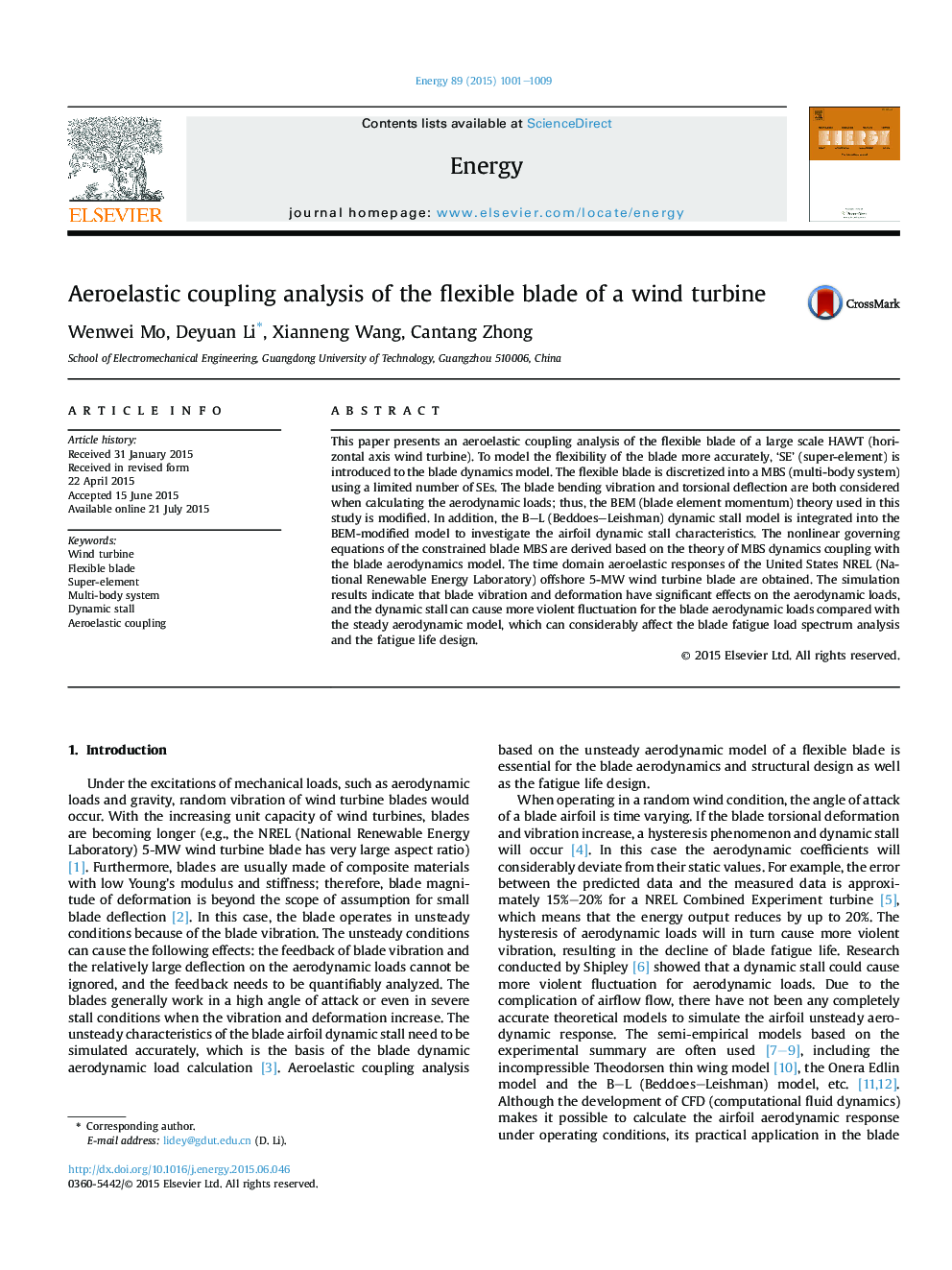| Article ID | Journal | Published Year | Pages | File Type |
|---|---|---|---|---|
| 1731970 | Energy | 2015 | 9 Pages |
Abstract
This paper presents an aeroelastic coupling analysis of the flexible blade of a large scale HAWT (horizontal axis wind turbine). To model the flexibility of the blade more accurately, 'SE' (super-element) is introduced to the blade dynamics model. The flexible blade is discretized into a MBS (multi-body system) using a limited number of SEs. The blade bending vibration and torsional deflection are both considered when calculating the aerodynamic loads; thus, the BEM (blade element momentum) theory used in this study is modified. In addition, the B-L (Beddoes-Leishman) dynamic stall model is integrated into the BEM-modified model to investigate the airfoil dynamic stall characteristics. The nonlinear governing equations of the constrained blade MBS are derived based on the theory of MBS dynamics coupling with the blade aerodynamics model. The time domain aeroelastic responses of the United States NREL (National Renewable Energy Laboratory) offshore 5-MW wind turbine blade are obtained. The simulation results indicate that blade vibration and deformation have significant effects on the aerodynamic loads, and the dynamic stall can cause more violent fluctuation for the blade aerodynamic loads compared with the steady aerodynamic model, which can considerably affect the blade fatigue load spectrum analysis and the fatigue life design.
Related Topics
Physical Sciences and Engineering
Energy
Energy (General)
Authors
Wenwei Mo, Deyuan Li, Xianneng Wang, Cantang Zhong,
